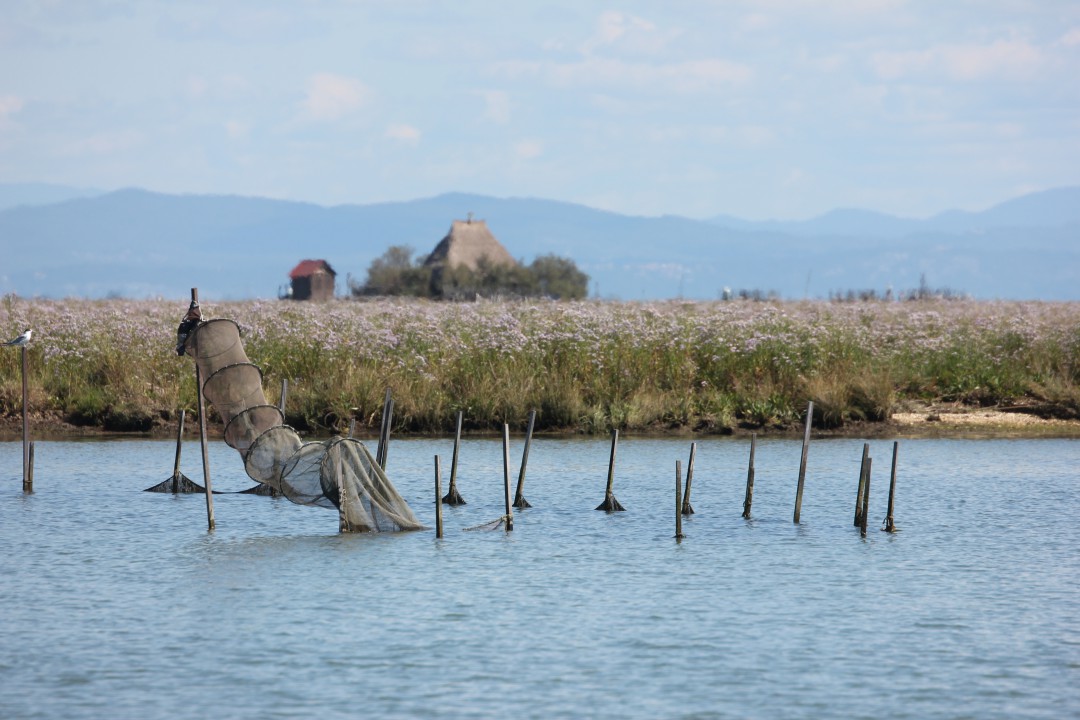La pesca in laguna viene ancora svolta da pochi e forse quella più caratteristica, componente tipica del paesaggio lagunare, è quella condotta con i “grasiui e cogoi“ . La “seraja o seragia“ è un antico metodo di cattura che si avvale di uno sbarramento, il “grasiul“, una volta in canna palustre e ora in rete, sostenuto da pali che chiude un tratto di laguna; sul perimetro della “seragia” ogni 35 metri vengono posti i “cogoi“, sacchi di rete lunghi 5 metri entro cui gli organismi entrano e non sono più in grado di uscire. Con il movimento delle maree le “seraje” catturano gamberetti, “schile” nei mesi invernali e latterini “angudela” da aprile a maggio, ma anche passere, anguille e spigole. I tratti di laguna per la pesca a Marano vengono sorteggiati (“toco”) ad ogni inizio di stagione, con il “toco de Quaresima” in aprile e il “toco de peschere” in autunno. Questi tipi di pesca, come gli altri mestieri, dipendono dai flussi migratori dei vari organismi dal mare alla laguna e viceversa. In primavera, attraverso le bocche lagunari, i giovani entrano - o come si dice “montano” - in laguna perchè ricca di nutrimento, mentre in autunno, quando i bassi fondali lagunari si raffreddano rapidamente, “calano”, escono in mare aperto verso acque più profonde e termostatate verso le coste dell’Istria, per riprodursi.

